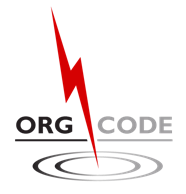5 Questions Organizations and Communities Must Ask to Improve Service and Themselves
I love the work we get to do with specific organizations and communities to help them make the change in becoming even better at their work. In the back of my mind, as I do this work, there are several questions that I try to have answered, and I encourage you to reflect on your own organization and community as you go through these questions:
1. Has the organization/community grown complacent?
I haven’t found a good measure for complacency, but there are a couple of sure-fire indicators that I pay attention to – and they happen in tandem. The first is complete satisfaction with how things are; the second is active rejection of how things might be.
The adage “grow or die” is true. That doesn’t mean to get bigger. It just means that organizations and communities have to be thirsty for information and training that enhances professional development; that they have to grow in their ability to provide efficiency or effectiveness in service delivery; and, they have to grow in such a way that ensures that what they are doing happens within a broader framework of service excellence.
I encourage people to, as appropriate, break the mold. Some people say things like “thinking outside the box”, but in some instances I think the better question is “What box?” I have never met an excellent organization/community that was happy with “good enough”.
2. What is the organization/community currently doing well?
Too often when people look at change they focus all of their energy on negatives or opportunities for improvement. In a strength-based approach I think the first step must always be to take a good look around and see what is working well. Chances are there will be some foundational pieces – people, processes, assets or technology – that can be built upon in the change process. Time and again we can build change by leveraging what is working well. And the morale of people shifts more positively when they can feel a sense of pride and ownership over pieces of work that are happening well.
3. What can the organization/community do better?
If the answer is “everything” that really means “nothing”. The purpose of this question is to focus attention on no more than 3-5 strategic or operational priorities at a time. Accomplish those change priorities well and then re-group to agree on the next 3-5. Too many times organizations/communities crash and burn because they are trying to function with too much weight of change that grinds them to a halt; or they appear rudderless and without direction because they haven’t been able to clearly and succinctly articulate those 3-5 strategic or operational priorities.
Of all five questions, determining what to do better must resonate top to bottom within the organization, and more so than the other questions, can benefit most from external expertise and analysis. Someone removed from the organization day in and day out may have an easier time zooming out and panning around before zooming back in on the most important areas to focus attention.
Organizations/communities are also more likely to need professional training, support and/or technical advice in some areas where improvements are necessary. Whenever possible, this should be included as part of the annual budget.
4. Does the organization/community listen and learn from the people that they serve?
It is frustrating to hear an organization/community talk about the needs of the people they serve when they have not first systematically and defensibly gathered information directly from those individuals. There are several important parts of this statement, so let’s break it down:
It has to be systematic. That is, it requires a plan and a defensible methodology. No sample sizes of one. No anecdotes used in place of hard facts.
It has to be defensible. This again refers to the approach used to gather the information. If people can poke holes in how the information was pulled together or analyzed they are more likely to discount the findings.
It has to be directly from the people served (except in those very rare cases where legally it must be another person). This avoids potential spin and factual inaccuracies. It removes potential agendas. It increases accountability.
Over all of my years of service, one of the many lessons I have seen learned time and time again is that what organizations/communities think and what they know are often two totally different concepts – and one that improves if the organization/community listens and learns from the people that they serve.
5. What seems likely to happen to the organization/community if change doesn’t happen?
I don’t have a crystal ball nor do I have a time machine that allows me to travel to the future (though I think it would be a neat premise for a movie if there was a car – like a Delorean – with a flux capacitor that, based upon a certain speed and about 1.21 jigawatts of power, allowed the people in the car to go forward or backward in time…but I digress). It seems impossible to me to absolutely predict what will happen. But I do think it is possible to monitor certain indicators and make informed opinions about the likelihood of some very specific things happening if those changes are not made. Scenario analysis can be very helpful for different people on the team to better understand how the future may unfold if changes do not happen.
All organizations/communities have a certain culture…a system of values and beliefs that holds them together; that drives actions; that informs behaviors; that influences relationships. It is never a matter of whether the culture exists. The real question is what kind do you have?
We have to evaluate on a fairly regular basis if we want to stay responsive and flexible to the needs of the people we serve. Reviewing these 5 questions is a good place to start.
